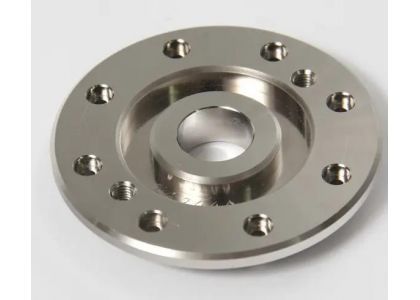
1. Different effects
1. Nickel plating is mainly used as a protective decorative coating.
2. The performance of the electroless nickel plating layer has the following effects
(1) The electroless nickel plating process using sodium hypophosphite as a reducing agent is a Ni-P alloy, and the Ni-P amorphous structure coating can be obtained by controlling the phosphorus content in the coating. The coating is dense, low in porosity, and its corrosion resistance is better than that of electroplated nickel.
(2) The as-plated hardness of electroless nickel plating is 450~600HV, after reasonable heat treatment, it can reach 1000-1100HV, and in some cases, it can even be used instead of hard chrome.
(3) According to the phosphorus content in the coating, the coating can be controlled to be magnetic or non-magnetic.
(4) The friction coefficient of the coating is low, which can achieve the state of oil-free lubrication, and its lubricity and metal wear resistance are also better than electroplating.
(5) Low phosphorus coating has good solderability.
Two, the principle is different
1. Nickel electroplating is a method of depositing a layer of nickel on the surface of ferrous or non-ferrous metal parts by electrochemical action.
2. The principle of electroless nickel plating is that under the catalysis of the catalyst Fe, the hypophosphite in the solution catalyzes dehydrogenation on the catalytic surface to form an active hydride, which is oxidized into phosphite; the active hydride and the nickel ions in the solution A reduction reaction is carried out to deposit nickel, which itself oxidizes to hydrogen gas.
3. Different uses
1. Electroplated nickel can be used as a surface coating, but it is mainly used as a base for chrome plating to prevent corrosion, increase wear resistance, luster and beauty. Widely used in manufacturing industries such as machines, instruments, meters, medical equipment, and household appliances. The workpiece is used as the cathode, and the pure nickel plate is used as the anode, and it is hung in the electrolyte made of nickel sulfate, sodium chloride and boric acid for electroplating.
2. Due to the comprehensive physical and chemical properties of the electroless nickel plating layer, such as excellent uniformity, hardness, wear resistance and corrosion resistance, this technology has been widely used, and it is almost difficult to find an industry that does not use the electroless nickel plating technology.
According to reports, the proportion of electroless nickel plating in various industries is roughly as follows: aerospace industry: 9%, automobile industry: 5%, electronic computer industry: 15%, food industry: 5%, machinery industry: 15%, nuclear industry : 2%, petroleum industry: 10%, plastic industry: 5%, power transmission industry: 3%, printing industry: 3%, pump manufacturing industry: 5%, valve manufacturing industry: 17%, others: 6%.